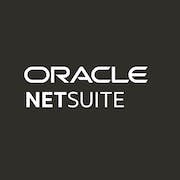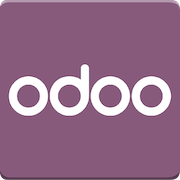Looking for the perfect material requirements planning software for your business? Our comprehensive buyer's guide has got you covered! Choose from the top MRP software options based on features, benefits, and more. Gain an edge in your manufacturing operations with the right MRP solution by accessing this guide.
Are you tired of struggling with inventory management for your business? Does tracking your material usage and production output leave you feeling overwhelmed? If the answer is yes, then you may want to consider investing in material requirements planning (MRP) software. The application is designed to streamline your inventory management process by automatically tracking the status of individual items, forecasting future material requirements, and generating purchase orders and production schedules. With the right one in place, you can save time, eliminate guesswork, and ensure that your entire organization always has the materials it needs to operate smoothly. In this buyer's guide, we'll provide an in-depth overview of the key features and benefits of this essential tool, along with some tips to help you choose the right one for your business. So let's dive in and discover how it can revolutionize your inventory management practices.
What is material requirements planning (MRP) software?
Material requirements planning (MRP) software is an essential tool for businesses that depend on inventory management to meet production demands. MRP systems help manufacturers and distributors determine the materials and resources needed to manufacture finished products while maintaining optimal inventory levels.
Common use cases include:
- Inventory management: MRP software assists in maintaining optimal inventory levels by ensuring that materials are available when needed and avoiding under or overstocking.
- Production planning: MRP systems allow businesses to create production schedules, allocate resources, and track production progress accurately.
- Supply chain management: The solution is a crucial element in supply chain management that helps to manage the flow of goods from the manufacturer to customers.
- Cost reduction: By optimizing inventory and production, MRP technology can help businesses save money on labor and storage costs.
- Sales and distribution: By managing production and inventory levels, an MRP system enables businesses to meet customer demands and improve on-time deliveries, thus enhancing customer satisfaction and retention.
- Forecasting: With the help of past data, MRP software can predict future demand levels and sales accurately, helping businesses make better decisions and plan for future growth.
There are various types of companies that use this application, however, the most common are the manufacturing industry and distribution companies that manufacture or distribute products in large quantities. Additionally, businesses with complex supply chains that face uncertainties related to demand and production can also benefit from it.
What are the advantages of using an MRP system?
MRP is a system that uses advanced algorithms to plan, schedule, and control the production and inventory of goods. Here are some of its main benefits:
- Increased efficiency: This material solution brings efficiency to the supply chain by optimizing inventory levels, reducing stock-outs, and ensuring timely delivery of goods. This helps minimize wasted time, effort, and resources.
- Improved planning and scheduling: It allows businesses to plan and schedule manufacturing and procurement activities with precision, using data-driven insights. This results in better capacity planning, reduced lead times, and optimization of resources.
- Better resource allocation: This program helps businesses allocate resources optimally by providing real-time insights into inventory levels, production schedules, and supplier lead times. This results in better resource allocation, reduced wastage and improved profitability.
- Enhanced communication: It encourages integration and communication between different departments, from purchasing to production to sales, and enables them to work together effectively towards common goals.
- Reduced costs: It also helps businesses reduce inventory costs by minimizing excess inventory, reducing stock-outs, and improving production processes and resource allocation. This leads to increased profit margins and a more competitive edge. Studies have shown that MRP software customers report on average a 14% inventory reduction.
10 key features of material requirements planning software
An MRP platform is designed to help manufacturing businesses streamline their inventory and supply chain management processes. Here are 10 of its common features:
1. Bill of materials management:
It allows you to create, edit, and maintain a bill of materials (BOM) for each product manufactured.
2. Inventory tracking:
With MRP technology, you can track the inventory of raw materials, work-in-progress, and finished goods at multiple locations.
3. Scheduling:
This feature enables businesses to schedule production and coordinate delivery of products and raw materials.
4. Procurement management:
An MRP program automates the procurement process, keeping track of purchase orders, supplier databases, delivery tracking, and more.
5. Master production scheduling:
It comes with a feature that facilitates the production of high-level, long-term schedules and manages production activities.
6. Capacity planning:
An MRP package allows you to visualize and allocate capacities of resources necessary to maintain the production schedule.
7. Material requirement planning:
It determines the materials and quantities required to produce the product and track their availability.
8. Planning and forecasting:
A materials requirements planning package provides valuable forecast and planning data based on sales data, material availability, and production planning.
9. Real-time data analytics:
Companies are also able to capture, manage and analyze data, to improve production efficiencies making use of this innovation.
10. Integration with other systems:
MRP software can integrate with other business systems such as accounting and CRM to create an enterprise-wide solution.
Key considerations when buying an MRP tool
It may be difficult to select the right package that is suitable for your business requirements. To help you make a wise decision concerning the purchase of your MRP solution, here are some crucial factors to consider:
- Firstly, you need to ensure that the system integrates with your existing ERP or business management system. Any disconnect between the systems can lead to discrepancies and reduced efficiency in data processing and sharing. Integration also ensures data accuracy and consistency, reducing errors and improving overall operations.
- Secondly, it's crucial to consider the software's scalability and customization features. As your business grows, your MRP solution should be able to scale and adapt to your changing needs without requiring a significant overhaul. The tool should allow for easy customization to adapt to different production and inventory management requirements.
- Thirdly, it's essential to analyze the platform's data management capabilities. A good one should have sophisticated analytics, reporting, and forecasting tools to help make informed decisions. It should also provide real-time data dashboards and business intelligence reports providing deep insights into inventory levels, material lead times, and production schedules.
- Fourthly, ensure that the application is user-friendly, with an intuitive user interface and easy navigation features. This is essential to ensure that your employees can use it without extensive training, reducing the costs of deploying the software. The user interface should have easily accessible and understandable features for real-time insights, forecasting, and reporting.
It is also important to consider the program's customer support and maintenance processes. Ensure that the vendor provides ongoing technical support and maintenance services for the solution, including software updates and security fixes. The vendor should also provide a comprehensive onboarding program and training materials to help employees get up to speed with the app quickly.
Industry trends for material requirements planning software
As the market evolves, several key trends are expected to dominate the MRP software scene. The global material requirements planning software market is expected to touch USD 8.2857 billion by 2028.
- To begin with, MRP technology is increasingly incorporating artificial intelligence (AI) and machine learning (ML) capabilities. This allows for more accurate demand forecasting and predictive modeling, reducing waste and saving time and resources. Additionally, cloud-based MRP systems will become more prevalent, enabling real-time collaboration and access to data across remote teams.
- Furthermore, MRP technology is expected to offer better integration with other systems such as Enterprise Resource Planning (ERP) and Customer Relationship Management (CRM) software. This will result in a more seamless and efficient overall business process. The tool is expected to offer enhanced customization options, allowing businesses to tailor the system to their specific needs, resulting in more precise control over their manufacturing processes.
Overall, these trends in MRP software demonstrate how technology is continuing to advance and disrupt traditional business processes, resulting in exciting new possibilities for businesses.
Conclusion
To sum up, investing in robust MRP software is a strategic decision that can greatly impact your business’s operational efficiency and overall success. By leveraging the power of MRP, companies can enhance their production processes, reduce costs, and achieve better coordination across departments. As you evaluate and select the best solution for your organization, consider how it will support your long-term goals and help drive sustained growth and profitability.









